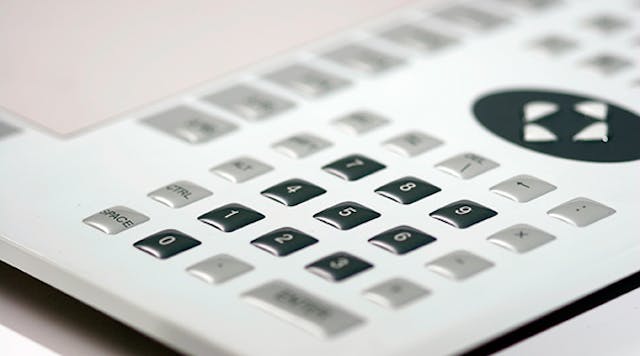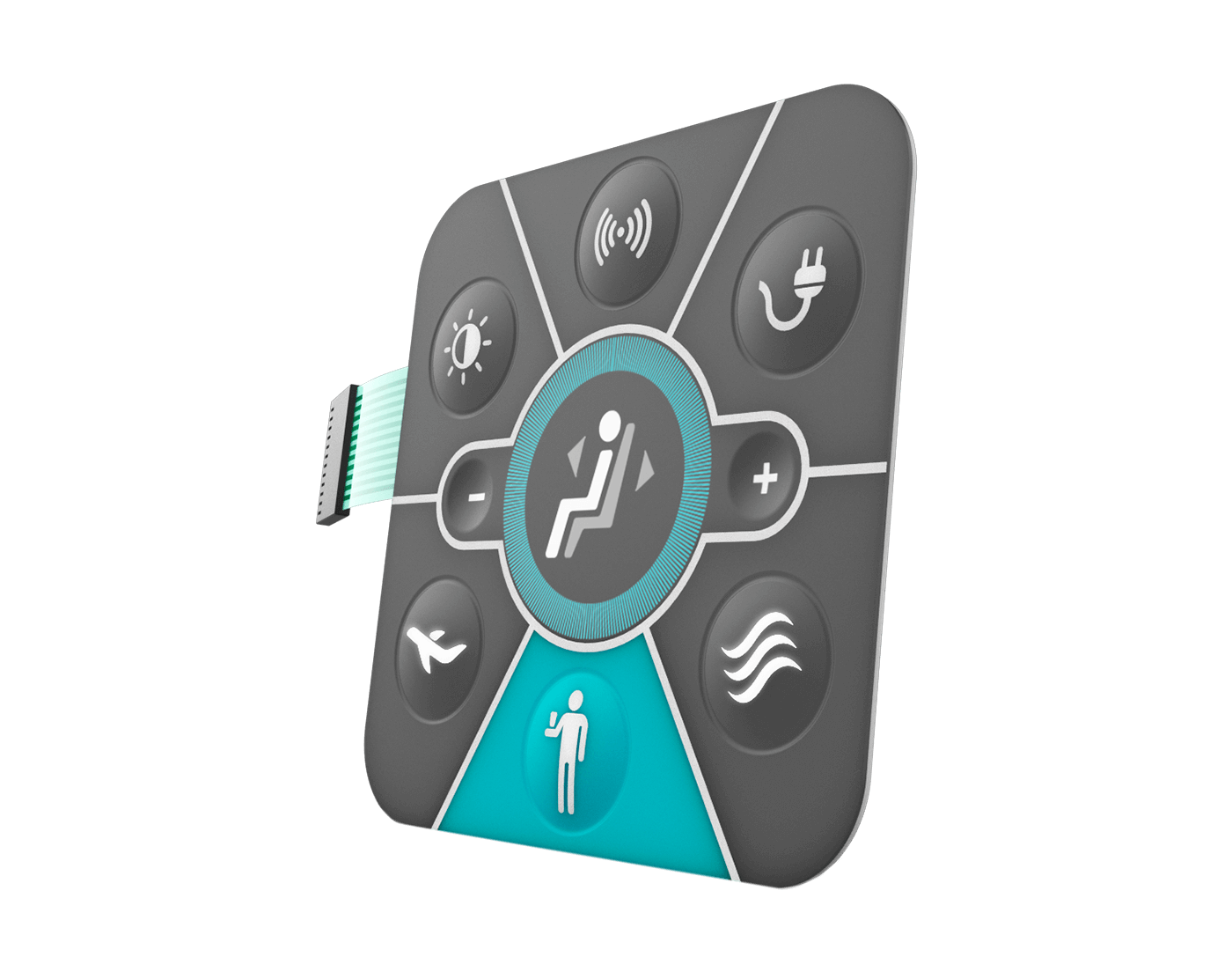Membrane Switches vs. Traditional Switches: What You Need to Know
Membrane Switches vs. Traditional Switches: What You Need to Know
Blog Article
Recognizing the Value of Membrane Switches in Customer Interfaces
Membrane switches are integral elements in the design of reliable interface, facilitating not only performance but likewise enhancing visual appeal and individual communication. Their special features, such as resistance to personalized designs and ecological factors, make them appropriate for a diverse variety of applications across several sectors. As we explore the numerous advantages and future patterns related to Membrane technology, it comes to be clear that these switches are extra than just elements; they stand for a merging of technology and functionality. The effects of this technology on individual experience deserve examining further.
What Are Membrane Buttons?

The spacer layer, which contains adhesive residential or commercial properties, allows for the splitting up of the circuit layer from the overlay, making certain that the button stays in a non-activated state until pressed. When stress is used to the overlay, it presses the spacer layer, linking the space and completing the circuit in the underlying layer. This layout not just reduces the physical room needed for typical mechanical switches yet also enhances the toughness of the tool, as Membrane buttons are normally immune to dirt, wetness, and other environmental variables.
Frequently found in applications varying from customer electronics to medical tools, Membrane switches are essential to modern innovation, providing a reliable and easy to use interface that lines up with contemporary style requirements.
Benefits of Membrane Buttons
While numerous switch modern technologies exist, Membrane Switches offer unique benefits that make them particularly preferable in numerous applications. One of the main advantages of Membrane buttons is their portable style, which allows for space-saving executions in devices where realty is restricted. Their thin profile not just boosts aesthetic appeal yet also promotes lightweight building and construction.
Another substantial advantage is their resistance to ecological factors. Membrane buttons are normally sealed versus moisture, dust, and impurities, making them perfect for usage sought after settings, such as clinical tools and industrial equipment. This toughness expands the lifespan of the switch, decreasing upkeep prices and boosting reliability.
Furthermore, Membrane switches can be personalized to satisfy certain layout needs, including unique graphics and colors that enhance individual interaction. Their tactile comments choices can likewise be tailored to offer a gratifying individual experience. Furthermore, Membrane buttons are economical, especially in high-volume applications, as they can be created effectively.
Applications in Numerous Industries

In the customer electronic devices market, Membrane switches are common in gadgets such as microwaves, washing devices, and push-button controls. Their tactile comments and aesthetic alternatives improve user experience while supplying a sleek, modern-day look. Additionally, auto producers utilize Membrane buttons in dashboard controls and infomercial systems, where area is restricted, and individual involvement is vital.
Moreover, the commercial sector leverages Membrane switches in control panels for machinery and devices, enabling user-friendly procedure in typically rough atmospheres. Their resistance to chemicals and moisture makes certain durability and reliability in these applications. Overall, the flexibility of Membrane Switches adds significantly to Source their extensive usage, making them essential in different technical domain names.
Design Factors To Consider for Membrane Buttons

When creating Membrane switches, a number of crucial factors to consider must be taken into account to make sure optimum functionality and customer experience. Firstly, the selection of materials is important; selecting long lasting, top notch substratums can boost the button's long life and resistance to ecological elements such as dampness and temperature changes.
Second of all, the layout of the visuals overlay must focus on clarity and convenience of usage. Symbols and message have to be readable, and the layout needs to facilitate intuitive communication (membrane switches). Additionally, responsive responses is essential; including a responsive dome or other devices can improve the individual experience by offering physical verification of activation
One more important factor is the button's electrical efficiency. Developers have to guarantee that the conductive traces are effectively made to decrease resistance and avoid signal disturbance. This involves analyzing the required actuation force and making certain compatibility with the digital components they will user interface with.

Future Fads in Membrane Innovation
As modern technology proceeds to advance, Membrane switches are positioned to evolve substantially, driven by innovations in products and manufacturing methods. One emerging fad is the unification of sophisticated products, such as conductive inks and versatile substrates, which improve longevity and decrease the overall weight of Membrane switches. These products not only boost the tactile action but likewise enable the layout of switches that can withstand harsher ecological conditions.
Furthermore, the integration of touch-sensitive modern technologies go to my blog is changing traditional Membrane Switches into even more interactive interface. Capacitive touch sensing units embedded within Membrane switch panels can provide an extra user-friendly and responsive individual experience, aligning with the growing need for sleek, contemporary designs in customer electronic devices.
In addition, improvements in printing methods, such as electronic and 3D printing, allow fast prototyping and customization of Membrane buttons. This versatility permits manufacturers to respond extra rapidly to market needs and customer choices.
Lastly, sustainability is coming to be a significant focus, with suppliers checking out eco-friendly materials and processes. As these trends unravel, the future of Membrane innovation guarantees boosted performance, visual appeal, and environmental responsibility, solidifying their function in advanced interface across numerous markets.
Conclusion
In conclusion, Membrane Switches stand for a crucial element in the layout of customer interfaces, combining functionality with visual adaptability. As innovations in innovation proceed, the evolution of Membrane buttons is anticipated to additional refine individual interfaces, driving technology and boosting usability in an increasingly complex technical landscape.
Membrane switches are important parts in the design of effective user interfaces, facilitating not just capability yet likewise improving visual allure and individual check interaction.Membrane Switches serve as an essential part in numerous individual interfaces, promoting a smooth communication between users and digital gadgets.While countless button technologies exist, Membrane Switches deal distinct advantages that make them specifically preferable in numerous applications.Furthermore, Membrane buttons can be tailored to meet particular layout needs, incorporating unique graphics and shades that boost individual interaction.In verdict, Membrane Switches represent a vital component in the style of customer interfaces, integrating functionality with visual versatility.
Report this page